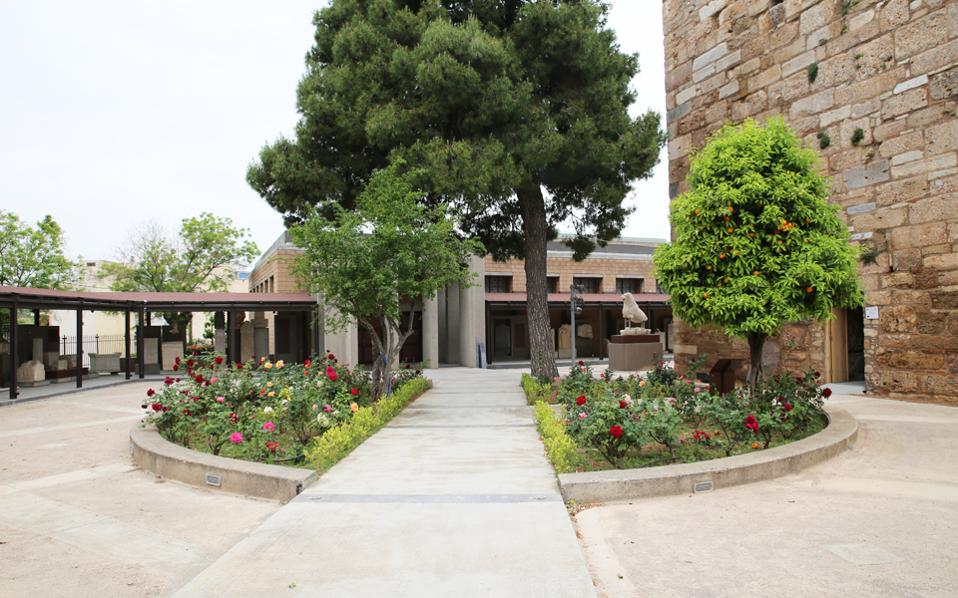The gate of Thebes

To visit the new Archaeological Museum of Thebes is to travel through time, space and myth. The journey is much longer and the experience much greater than the one-hour drive from Athens would suggest. This is not only because of the museum and its great exhibition ranging from Boeotia’s prehistory right up to the establishment of the modern Greek state. Nor is it simply the course that the visitor follows between the antiquities and the way they are grouped, which present Thebes and Boeotia through all their turbulent history since the first traces of humans in the area. The journey from Athens, the drive through the city, the cool wind on the hill on which the city is built, looking on the fertile plain among the mountains and ancient marshes, place the visitor firmly in his own place and time. But they also make him a part of history, like the stones and sculpted marble looted from buildings of all previous times to build the medieval tower in the museum’s courtyard.
Every museum is a gate to other times, an exhibition of the rise and fall, the life and death, of people and cultures. Visiting Thebes today, though, adds depth to this dimension – because whatever we do we cannot escape the knowledge that we too live at a turning point for Greece – between growth and decline, between development and stagnation. In the best outcome, this stagnation will mean we conserve what we have before we continue our rise, and will not be the pause before the fall. Thebes is a good place to remember this.
The new national highway, the beautiful and functional museum building that was inaugurated in 2016, the magnificent exhibits that represent whole eras, currents of thought and trade, the objects of great significance from important graves, the everyday items, all come together to show a robust and healthy society today. A society which can build major infrastructure projects and share knowledge. Much of this is attributable to Greece’s membership of something greater than the ancient city-state, greater than the nation-state: Greece is a member of the European Union, and it is this which has given it the wealth to build great projects and to produce well-trained professionals in every sphere. This does not mean that the bad habits have died out, as the years of crisis prove so poignantly. The museum was closed for a full 10 years while the new building was built. Today’s city has few signs of the great Thebes of antiquity, the city of myth and history, the city of Cadmus and Heracles, of Oedipus and the Sphinx, of Antigone and the great general Epaminondas, who oversaw the city’s rise over the rest of the Greeks. Furthermore, the museum has no shop and no cafeteria. For years we have criticized the dysfunction of the state agency responsible for this – the Archaeological Receipts Fund – but the biggest problem stems from the criminal negligence of those above the fund. In their shocking indifference, they allow large amounts of money and good will to be lost by not stocking selling points in museums, by leaving sites and museums closed even when money has been raised to pay for guards (as in the present case of Ancient Nemea).
These negative points contribute toward the overall history of the museum and the region. It is not only the exhibits and the way that they are presented which “speak” to us but also the way that we, and our time, communicate with them. The museum has taken steps toward this dialogue, allowing visitors to touch certain antiquities, setting up a good website (www.mthv.gr/en/), and so on. The archaeologists, the curators, the officials in charge, the polite guards, all seem to have worked with great care and zest to achieve the best possible result. European and national funds helped the project reach fruition. The things that are lacking, the mistakes made at other levels, undermine the whole. This is the story of Greece, in other words.
Inside the museum, all the tides of history are presented in a way that tells the story fully without excesses. But it is the location of the museum itself, on the western slope of the Cadmean hill, which places it at the center of the ancient and modern city. At its foundation level we can see the remains of a house from the third millennium BC, graves from the 17th century BC and foundations from the Mycenaean city, as the very handy, bilingual pamphlet provided by the Ephorate of Antiquities of Boeotia explains. The view from the courtyard, though, tells the tale in its broader strokes: Despite the chaotic construction of today’s city, the hill’s prominent position over the fertile plains, with the national highway at the further edge, suggests how the city was founded, how it became a crossroads for trade and war, how it was affected by every era, for good or ill; we can understand its triumphs and defeats, how it rose again and then found itself on the margins again.
The new Archaeological Museum of Thebes speaks to our own troubled time. It shows that a city’s or a nation’s rise and fall, its myths and history, its past and its present, our ancestors and ourselves, are all part of the great, merciless river of time. The only difference is that we today still hope we can affect our course.



